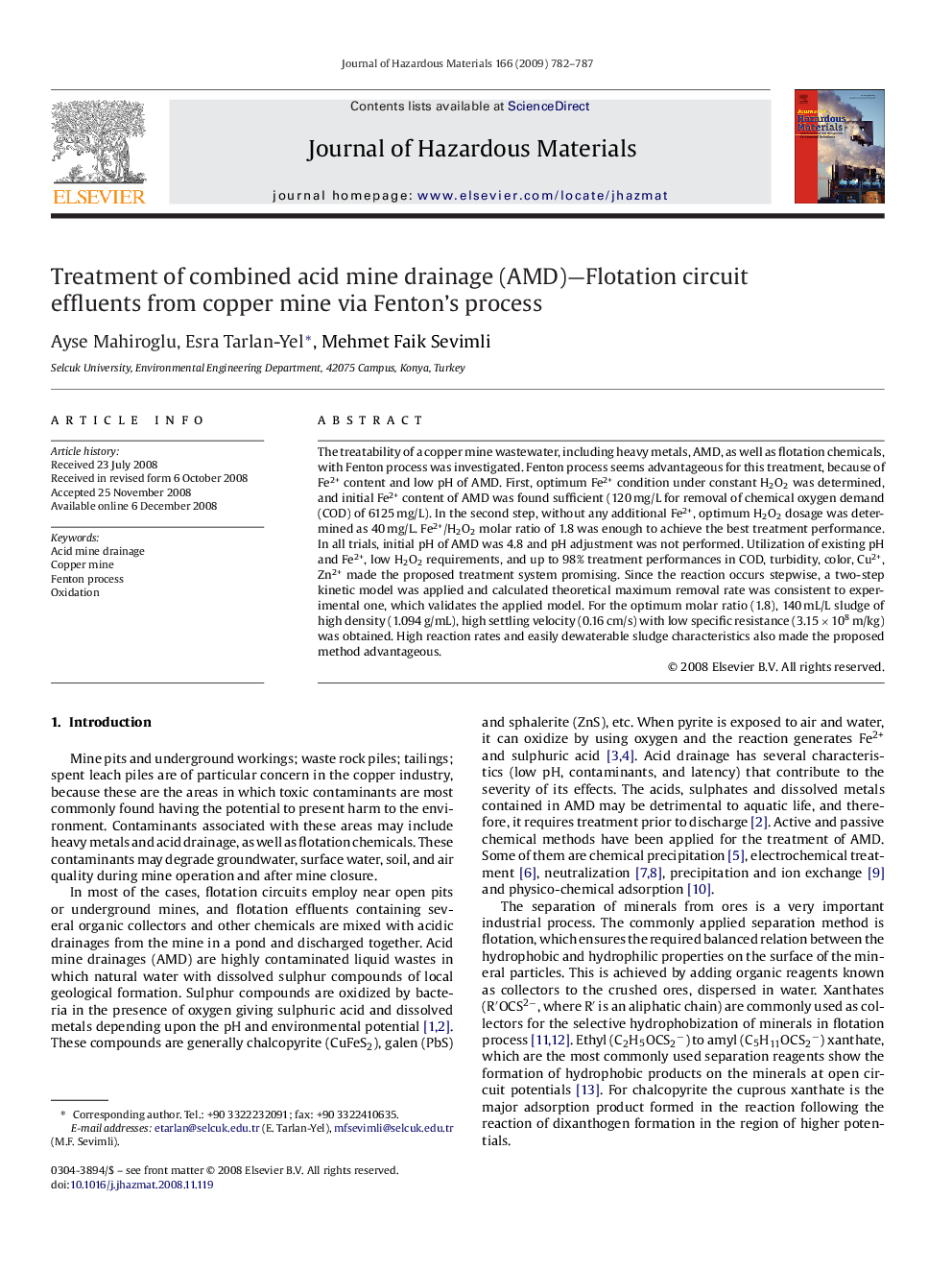| Article ID | Journal | Published Year | Pages | File Type |
|---|---|---|---|---|
| 582012 | Journal of Hazardous Materials | 2009 | 6 Pages |
Abstract
The treatability of a copper mine wastewater, including heavy metals, AMD, as well as flotation chemicals, with Fenton process was investigated. Fenton process seems advantageous for this treatment, because of Fe2+ content and low pH of AMD. First, optimum Fe2+ condition under constant H2O2 was determined, and initial Fe2+ content of AMD was found sufficient (120Â mg/L for removal of chemical oxygen demand (COD) of 6125Â mg/L). In the second step, without any additional Fe2+, optimum H2O2 dosage was determined as 40Â mg/L. Fe2+/H2O2 molar ratio of 1.8 was enough to achieve the best treatment performance. In all trials, initial pH of AMD was 4.8 and pH adjustment was not performed. Utilization of existing pH and Fe2+, low H2O2 requirements, and up to 98% treatment performances in COD, turbidity, color, Cu2+, Zn2+ made the proposed treatment system promising. Since the reaction occurs stepwise, a two-step kinetic model was applied and calculated theoretical maximum removal rate was consistent to experimental one, which validates the applied model. For the optimum molar ratio (1.8), 140Â mL/L sludge of high density (1.094Â g/mL), high settling velocity (0.16Â cm/s) with low specific resistance (3.15Â ÃÂ 108Â m/kg) was obtained. High reaction rates and easily dewaterable sludge characteristics also made the proposed method advantageous.
Related Topics
Physical Sciences and Engineering
Chemical Engineering
Chemical Health and Safety
Authors
Ayse Mahiroglu, Esra Tarlan-Yel, Mehmet Faik Sevimli,
